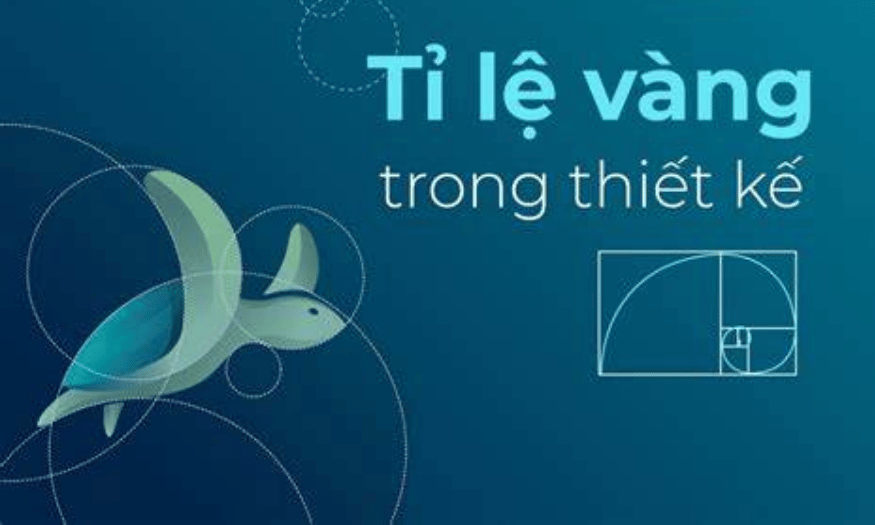Best Selling Products
Minimalist But Modern Design Trend
Nội dung
- 1. What is Minimalism style?
- 2. History of Minimalism style
- 3. What is the application of minimalism style?
- 4. Outstanding features of minimalism in website and app design
- 4.1 Clear layout and empty space
- 4.2 Minimalist colors
- 4.3 Simple Typography
- 4.4 Gentle effect
- 5. Some characteristics of minimalist design trends in interior design
- 5.1 Open and airy space
- 5.2 Neutral colors
- 5.3 Simple furniture
- 5.4 Maximize natural light
- 5.5 Choosing natural materials
- 6. Application of minimalism style in packaging design
- 7. Tools to help create impressive minimalist design
- 8. Conclusion
With the philosophy of "less is more", the minimalist design style not only helps the living space become neat and clean but also creates a feeling of relaxation and comfort. Simple lines, neutral colors and optimizing the function of each piece of furniture are important factors in minimalist design. In this article, Sadesign will explore with you more deeply the features, benefits and how to apply this design style to your living space, and provide useful suggestions to make the space more modern and sophisticated.

With the philosophy of "less is more", the minimalist design style not only helps the living space become neat and clean but also creates a feeling of relaxation and comfort. Simple lines, neutral colors and optimizing the function of each piece of furniture are important factors in minimalist design. In this article, Sadesign will explore with you more deeply the features, benefits and how to apply this design style to your living space, and provide useful suggestions to make the space more modern and sophisticated.
1. What is Minimalism style?
Minimalism is a philosophy of life and design that focuses on simplicity and minimalism. It is not just an aesthetic trend but also reflects a conscious way of living, where people seek serenity by eliminating unnecessary elements, keeping only the most essential and core values. Minimalism encourages us to clean up our physical and mental space, thereby creating comfort and peace in our daily lives.
Originating from the modern art movement in the mid-20th century, minimalism carries the motto "Less is more". This means that beauty lies not in ostentation but in simplicity and sophistication. Minimalist designs often use clean lines, simple forms and limited colors, aiming to create a strong impression without being fussy. This combination not only shows luxury but also brings a pleasant feeling to the viewer.
This style is not only limited to the field of art but has spread to many different fields such as architecture, fashion, and interior design, becoming an indispensable part of modern life. From living spaces to consumer products, minimalism has proven its appeal and high applicability in daily life.
.png)
2. History of Minimalism style
Minimalism emerged amid a period of great social and artistic upheaval in the mid-20th century. After World War II, the explosion of consumerism led to the rise of maximalism, where everything was exaggerated, from color to form. However, it was during this period that a group of artists began to seek a different approach, aiming for a more simple and pure approach in art.
The minimalism movement officially began in the 1960s and 1970s, when artists such as Donald Judd, Agnes Martin, and Dan Flavin emerged with minimalist works. They abandoned traditional techniques to explore new forms and materials, emphasizing simplicity and directness in art. One of the most famous works that laid the foundation for minimalist thinking is “Black Square” (1915) by Russian painter Kasimir Malevich, through which art was redefined in a new way.
Over time, the minimalism movement has expanded beyond painting and sculpture to architecture and interior design. Minimalist living spaces have become a symbol of luxury, where each item is carefully selected, bringing a sense of peace and comfort. This style has become a lifestyle, a philosophy of life that aims for serenity and peace amidst the hustle and bustle of modern life.
3. What is the application of minimalism style?
One of the prominent applications of minimalism is in interior design. Minimalist living spaces are often decorated with items that have clear functions, light colors and clean lines. Eliminating unnecessary details not only creates a sense of spaciousness but also helps users easily focus on the truly important activities in life. Each item in the space is carefully selected, thereby creating a harmonious and aesthetic overall picture.
In addition, minimalism has also entered the technology field, especially in web design and mobile applications. Instead of cramming too much information and complex images, websites and applications today often focus on user experience. Minimalist design makes it easy for users to navigate and search for information, thereby improving efficiency. In fact, a simple, clean interface not only brings comfort but also creates a strong impression of professionalism and trust.
.png)
4. Outstanding features of minimalism in website and app design
4.1 Clear layout and empty space
Minimalist websites focus on using white space to emphasize important elements. The clean layout makes it easy for users to navigate and focus on the essential content, without being distracted by unnecessary details. White space not only creates a sense of comfort but also highlights the message the website wants to convey.
A clear layout also helps users quickly find the information they need, improving the overall experience. When everything is well organized, users will find it easier to interact with the content, contributing to the success of the website.
.png)
4.2 Minimalist colors
The colors in minimalist website design are often neutrals like white, black, and gray. These soft colors not only bring elegance but also help users focus on the main content. Color accents are used strategically, usually on call-to-action (CTA) buttons or important information, to attract attention without being distracting.
The simple color combination not only creates a sense of harmony but also helps users quickly identify and distinguish important elements. This makes the user experience more coherent and pleasant, helping them easily find information without difficulty.
4.3 Simple Typography
Typography plays an important role in conveying information and making an impression on the viewer. In minimalist design, fonts are often carefully selected to match the brand identity, while ensuring readability and neatness. The number of fonts is usually only 1-2, helping to create consistency and continuity throughout the interface.
Using simple typography not only makes the content easy to understand but also creates a strong impression on users. A clear, easy-to-read typeface will help users feel more comfortable interacting with the website or app, thereby increasing satisfaction and the likelihood of returning.
.png)
4.4 Gentle effect
Effects in minimalist web design are often used subtly and sparingly. Effects such as hover, fade, scroll reveal or parallax are used to enhance the user experience without reducing the readability and usability of the website. Subtle effects help highlight important elements without being distracting or slowing down interactions.
The goal of these effects is to serve the purpose of conveying information effectively. When done correctly, these effects not only add depth to the design but also make it fun and exciting for users to explore the content.
5. Some characteristics of minimalist design trends in interior design
5.1 Open and airy space
Minimalist style especially prioritizes open and airy spaces, creating a spacious and comfortable feeling for users. Spaces are often connected, minimizing the number of dividing walls, allowing light and air to circulate freely. This not only makes the room more spacious but also encourages interaction and connection between living areas.
The connection between spaces also brings flexibility in interior decoration. You can easily change the arrangement to suit your needs without feeling constrained by the walls. This is an important factor in creating a comfortable and friendly living environment.
5.2 Neutral colors
The main colors in minimalist interior design are usually neutral tones such as white, black, beige and gray. These colors not only create a sense of elegance but also help highlight the simplicity and sophistication of the furniture. This color choice helps the space become harmonious and pleasant, creating a foundation for other elements in the design.
Using neutral colors also makes it easy for users to combine with other decorative items without worrying about losing consistency. Color accents can be cleverly added through accessories such as pillows, wall hangings or carpets, helping the space to remain fresh without being confusing.
.png)
5.3 Simple furniture
In minimalist interior design, furniture is often simple and elegant in design, not fussy or complicated. These items are chosen based on functionality and harmony with the overall space. For example, a basic sofa combined with a simple coffee table will create an elegant and modern style for the living room.
Simplicity in furniture design not only saves space but also brings a sense of comfort and closeness. Each item is carefully selected to ensure not only aesthetics but also functionality, creating an ideal living environment for the family.
5.4 Maximize natural light
Minimalist style focuses on taking advantage of natural light to create an airy and pleasant space. Windows are often designed large to receive maximum light, making the space bright and full of life. At the same time, the use of thin fabric curtains also allows light to pass through easily, creating a sense of openness for the space.
Maximizing natural light not only makes a room more beautiful, but also has health benefits, helping to improve mood and productivity. A space filled with natural light will always make you feel comfortable and full of energy.
5.5 Choosing natural materials
In minimalist interior design, natural materials such as wood, stone, glass and metal are often preferred. These materials not only possess natural beauty but also bring high durability, can be used for a long time without becoming outdated. The use of natural materials helps create a sense of closeness and friendliness to the environment, while highlighting the authenticity of the space.
The combination of natural materials not only creates aesthetic beauty but also brings a sense of warmth and peace to the house. By choosing materials carefully, you can build a living space that is not only beautiful but also sustainable and environmentally friendly.
6. Application of minimalism style in packaging design
Minimalism is not limited to graphic design or interior design; it has also created a new wave in the field of packaging design. In the current context, when environmental issues are becoming more and more urgent, many brands have started to apply minimalist thinking to their product packaging. By minimizing waste and using fewer materials, companies are not only optimizing costs but also demonstrating their commitment to sustainability.
Minimalist packaging design often focuses on eliminating unnecessary details, keeping only the essential elements. This not only helps reduce the size and weight of the packaging but also highlights the product inside. A simple packaging, with a delicate and clear form, will easily attract the attention of consumers and create a more environmentally friendly feeling.
.png)
7. Tools to help create impressive minimalist design
In the modern design world, using professional tools is essential to create minimalist yet impressive products. One of the most popular tools in the graphic design industry is Photoshop . With its powerful photo editing capabilities and flexible features, Photoshop allows designers to easily create minimalist, sophisticated works without spending much time.
Photoshop offers a variety of design tools such as layers, drawing tools, and filters, making it easy for users to realize their creative ideas. These features not only help create sharp images, but also allow designers to experiment with colors and styles without any hindrance.
To optimize your Photoshop experience and exploit its full potential, upgrading to the latest versions is essential. Sadesign provides courses and support materials to help you familiarize yourself with and master the latest features of Photoshop. With dedicated guidance from experts, you will quickly improve your design skills.
.png)
8. Conclusion
Minimalist design is not just a trend, but a way of life that strives for simplicity and sophistication. By eliminating unnecessary details, we can create living spaces that are not only beautiful but also truly functional and comfortable. Applying this style not only improves the aesthetics of the house but also brings peace of mind. Start your design journey with minimalist and modern ideas, so that your living space becomes the ideal place to relax and enjoy life.
Upgrade now












































